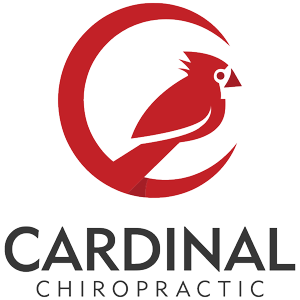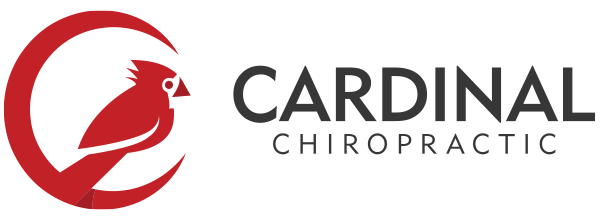Your body is not designed to sit all day. If you have a job that requires you to sit for the majority of the day, this can increase the likelihood of you experiencing lower back, mid back, upper back, and neck pain. By practicing some simple steps every day, you can minimize the likelihood of experiencing chronic pain from sitting.
Sitting, in and of itself, will put an increased load on your lower back muscles, discs, and joints. Overtime, this increased load can build up and cause problems. Additionally, sitting for extended periods of time can also cause poor posture and muscle imbalances. It is important to incorporate regular movement and exercise into your daily routine to counter-act the negative effects of prolonged sitting.
Ergonomics
First and foremost, proper ergonomics are crucial. Workplace ergonomics focuses on optimizing the interaction between your body and your workstation. This will help to enhance comfort, productivity, and overall well-being. Proper ergonomics can help you to prevent musculoskeletal disorders, reduce fatigue, and improve efficiency.
If you are required to sit for most of the day, and have poor ergonomics, it doesn’t matter how many movement breaks or stretches you do. You will not be able to counteract an unhealthy sitting environment. If your company offers worksite ergonomic evaluations, take advantage of this. Otherwise be sure to understand what proper ergonomically are and set your desk up appropriately.
Some key principles of ergonomic workstation design include:
- Proper chair and desk height to support good posture and minimize strain on your body.
- Positioning your computer monitor at eye level to reduce neck and eye strain.
- Using an ergonomic keyboard and mouse to promote neutral wrist and hand positions
- Arranging frequently used items with an easy reach to minimize repetitive reaching
- Taking regular breaks, stretching, and incorporating movement throughout your workday to prevent prolong static postures
Sit to Stand Desks
Sit to stand desks, can take a lot of the sitting stress away from your body. I personally like the sit to stand desks because performing any one act repetitively is not good. These desks allow you to alternate between sitting and standing. They can help you to improve your posture, improve your blood circulation, and reduce the risk of musculoskeletal injuries. However, it is important to note that even with sit to stand desks, it’s still beneficial to incorporate regular physical activity and breaks throughout the day for optimal health.
Movement breaks
Movement breaks are short breaks that you take throughout the day where you get some movement to your body.
Movement breaks can help with:
- Increasing blood circulation: movement breaks get your blood flowing, improving circulation, and delivering more oxygen and nutrients to your muscles and organs.
- Improve productivity and focus: physical activity can enhance cognitive function, boost energy levels, and improve concentration, leading to increase productivity and mental clarity. Studies show that those who take breaks throughout the day are more productive throughout the workday.
- Relieving muscle and joint tension: moving and stretching during breaks, can help alleviate muscle stiffness and tension that may result from prolong sitting and repetitive tasks
- Enhanced mood and well-being: engaging in physical activity releases endorphins, which can elevate your mood, reduce stress, and improve overall well-being
To incorporate movement breaks, try setting reminders or alarms to prompt you to stand up, stretch, walk around, or engage in light exercises throughout the day. Even short breaks of a few minutes can make a difference in your overall health and well-being.
Here are a few exercises you can try during your movement breaks:
1. Stretching: Perform simple stretches to relieve tension and improve flexibility. Focus on areas like your neck, shoulders, back, hips, and legs.
2. Walking or jogging in place: Stand up and march or jog in place for a few minutes to get your heart rate up and increase blood circulation.
3. Jumping jacks: Start with your feet together and arms by your side. Jump, spreading your feet wider than hip-width, and raise your arms overhead. Return to the starting position and repeat.
4. Desk push-ups: Stand a few feet away from your desk, place your hands on the edge, and walk your feet back. Bend your arms, lowering your chest towards the desk, and then push back up.
5. Squats: Stand with your feet shoulder-width apart, lower your body by bending your knees, and then rise back up. Repeat for several reps, focusing on proper form.
6. Shoulder rolls: Sit or stand tall and roll your shoulders forward in a circular motion. Repeat in the opposite direction.
Remember to listen to your body and adapt these exercises to your comfort level. It’s always a good idea to consult with a healthcare professional before starting any new exercise routine.
Stretches
Stretching tired and tight muscles from prolonged sitting can help you to feel better throughout the day. This will also help to improve your flexibility which will help with your mobility. Your joint mobility can be impacted with decreased muscular flexibility.
Here are a few simple stretches you can try while sitting at your desk:
1. Neck Stretches: Gently tilt your head to one side, bringing your ear closer to your shoulder. Hold for a few seconds, then repeat on the other side. You can also try gentle forward and backward head movements.
2. Shoulder Rolls: Roll your shoulders forward in a circular motion, then backward. This helps release tension in your shoulders and upper back.
3. Chest Opener: Clasp your hands behind your back, straighten your arms, and lift your chest upward. This stretch helps counteract the hunched posture often caused by sitting for long periods.
4. Seated Spinal Twist: Sit tall in your chair, place one hand on the opposite knee, and gently twist your torso to the side. Hold for a few seconds, then switch sides. This stretch can help alleviate tension in your lower back.
Remember to listen to your body and avoid any stretches that cause pain or discomfort. Incorporating these stretches into your daily routine can help improve your posture and reduce muscle tension while working at your desk.
Chiropractic Adjustments
Chiropractic adjustments are one of the best ways to relieve the tension in your muscles and joints after prolonged sitting. Traditional chiropractic adjustments (spinal manipulation) can help break up muscular adhesions (scar tissue) that form in your muscles dues to chronic stress. These adjustments can get you feeling and moving better.
Because prolonged sitting is linked to abnormal and unhealthy postures, corrective care chiropractic can help return your spine and posture back to a more normal and healthy position. Reach out to a CBP trained chiropractor to get better posture, better spinal alignment, and better health!

